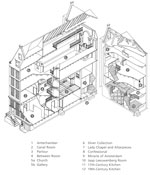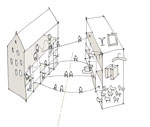Our Lord in the Attic: A Case Study
The future of the museum
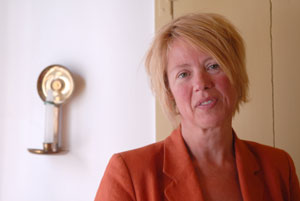 In a few years the monument will celebrate its 350th anniversary, a special occasion. But the years have taken their toll: the building is in need of repair, and the modern facilities required by a functioning museum obscure its historical aspects. Torn between the need to conserve the building and the desire to embrace its potential as a public attraction, we are struggling to let this centuries-old monument radiate its special significance.
In a few years the monument will celebrate its 350th anniversary, a special occasion. But the years have taken their toll: the building is in need of repair, and the modern facilities required by a functioning museum obscure its historical aspects. Torn between the need to conserve the building and the desire to embrace its potential as a public attraction, we are struggling to let this centuries-old monument radiate its special significance.
Challenges
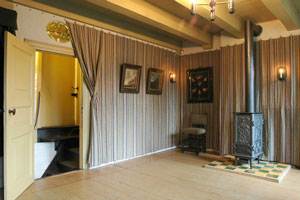 At present, the presentation of the collections (house and movable collection) is of a mixed nature. On the one hand there are parts in the museum which reflect the history of the house. On the other hand there are several rooms which are used as an exhibition room and thirdly, there are rooms which show a combination of the two ( as can be seen in the canal room). Recently we are trying to bring back the spirit of the place, a house that was lived and worked in for hundreds of years. In the near future this means that the exhibition rooms will be changed back to their original function (as living quarters from different periods). In rooms which now have a plural function, the objects will be taken out which have no relation with the original function of the room. The leading principle for the re-decoration of the rooms is that the stories which we are going to tell in the future are provided by the house itself. Research in the historical, architectural and social history is of course vital.
At present, the presentation of the collections (house and movable collection) is of a mixed nature. On the one hand there are parts in the museum which reflect the history of the house. On the other hand there are several rooms which are used as an exhibition room and thirdly, there are rooms which show a combination of the two ( as can be seen in the canal room). Recently we are trying to bring back the spirit of the place, a house that was lived and worked in for hundreds of years. In the near future this means that the exhibition rooms will be changed back to their original function (as living quarters from different periods). In rooms which now have a plural function, the objects will be taken out which have no relation with the original function of the room. The leading principle for the re-decoration of the rooms is that the stories which we are going to tell in the future are provided by the house itself. Research in the historical, architectural and social history is of course vital.
In addition to offering visitors a special experience, we also wish to provide them with information about the monument that relates to multiple fields of interest: the history of the building itself, its occupants, and its surroundings; the history of religion in Amsterdam; the problem of coexisting with people of other religious persuasions. This educational task sometimes conflicts with the conservation and management of the monument. How are we going to deal with the increasing visitor numbers? Do we have to improve the indoor climatic conditions to provide more comfortable situations for our visitors? How will this affect the building and the collection?
And from the preservation side, how are we going to take proper care of objects we receive on loan from other museums for our new temporary exhibitions? The current national and international loan agreements often stipulate strict requirements in terms of climate control and protection. We cannot at present adhere to these requirements and we are already experiencing that is becoming more difficult to get objects on loan from other museums.
Wishes
We wish to show Our Lord in the Attic in all its glory, allowing visitors to experience the richness of its history. We therefore seek to:
- Display the layout and furnishings of the monument – both the private apartments and the church in the attic – as authentically as possible;
- Offer visitors a historical experience by guiding them through the building along a route that reveals both the function and the history of the various rooms;
- Manage the monument proactively, with an eye to conserving the building while offering visitors a rewarding experience;
- Offer visitors enough background information to place the building and its clandestine church in the proper historical context;
- Ensure that the museum lives up to the professional standards of our time
Opportunities
If we are to continue in the 21st century to exhibit Amsterdam’s religious and architectural history in a satisfactory way, we must take action now. Our goal is the careful restoration and refurbishing of this important monument, in order to give visitors a true taste of Amsterdam’s history. In addition, we seek to offer in-depth information on the building’s historical aspects in a peaceful and spacious setting in a separate facility. In this way, we can create a spot in Amsterdam where history comes to life, prompting visitors to ponder not only on the past, but also the present and the future.
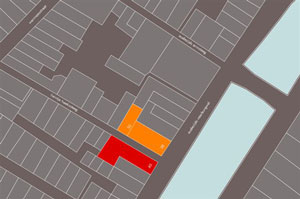 We now have an opportunity to achieve these goals and to combine a historical experience with sensitive management and adequate public facilities. The Museum Amstelkring Foundation has purchased the house across the alley – the Heintje Hoekssteeg (Oudezijds Voorburgwal 38, including the annex behind it) – and intends to incorporate it into the museum. In this image our museum building is indicated in red and the recently acquired building in orange.
We now have an opportunity to achieve these goals and to combine a historical experience with sensitive management and adequate public facilities. The Museum Amstelkring Foundation has purchased the house across the alley – the Heintje Hoekssteeg (Oudezijds Voorburgwal 38, including the annex behind it) – and intends to incorporate it into the museum. In this image our museum building is indicated in red and the recently acquired building in orange.
